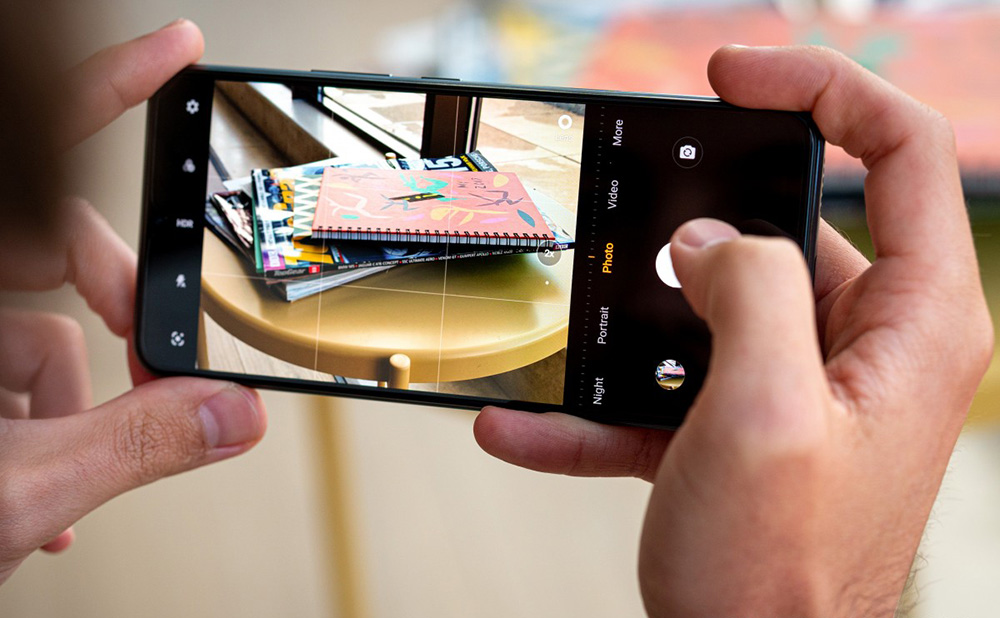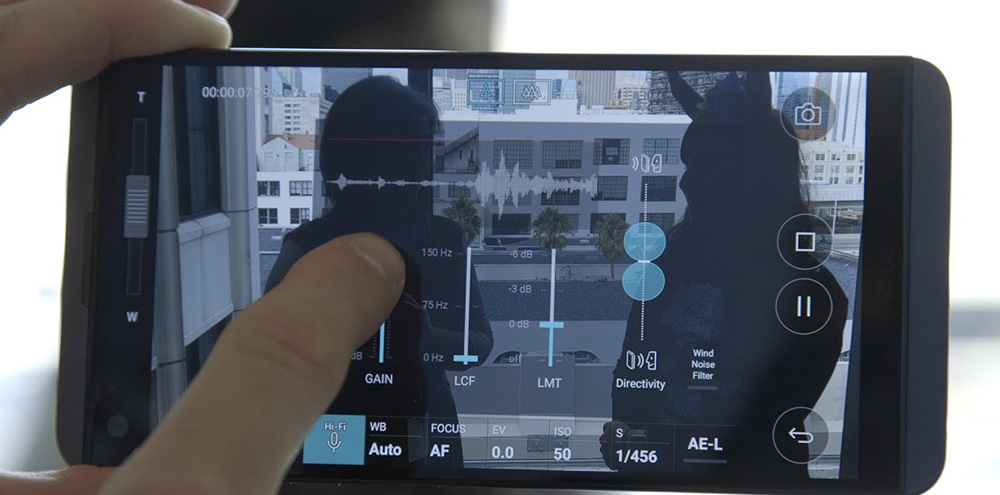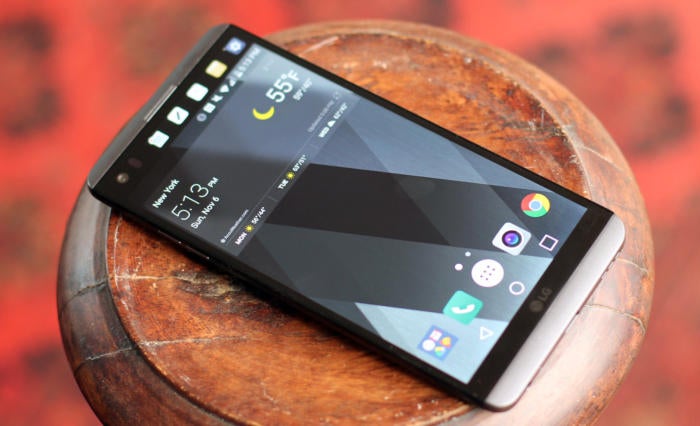
The V20 also helps fill the giant hole left by the disgraced Note7. At $800 for a 64GB unlocked version, it costs more than the 32GB Pixel XL. Still, you get an extra 32GB of storage and a removable battery. So, suppose that can’t finally rattle consumers into caring about their phones. In that case, it should just give up and focus on TVs and refrigerators.
If you’re primarily interested in photo, video, or audio recording performance, jump to the creation section. Features galore. Spoiler; The V20 takes reasonably good pictures. Its audio recording is best-of-class, but video image stabilization is pretty bad. For now, I’m going to jump into the everyday V20 experience.
Industrial Design, Ergonomics and Battery System
The V20 is slightly longer than the Pixel X, but it is easier to hold. The aluminum rear panel has a bit more tooth to it. The V20 cradles nicely in my hand, while the Pixel X always feels too slippery. I’m bummed that LG ditched the grippy, textured polycarbonate backing of the V10. Still, the new design looks more up-market. The plastic chins at the top and bottom of LG’s packaging don’t detract from a generally premium appearance.
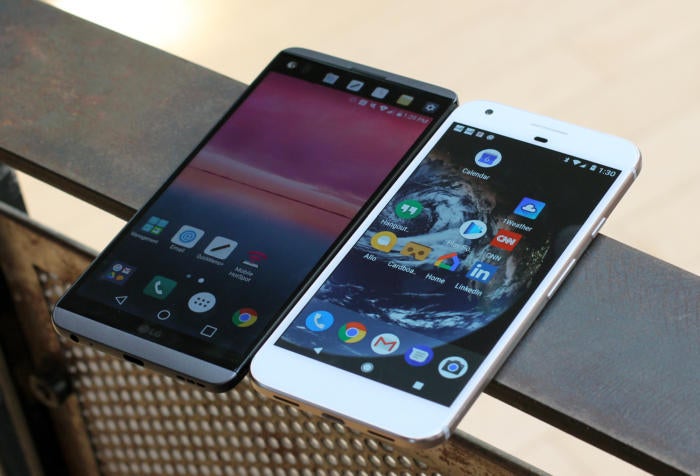
You’ll find thinner bezels compared to the Pixel. Still, suppose you think camera bumps are ugly. In that case, you’ll hate the giant, oval projection surrounding the V20’s large camera apparatus. Like the two rear cameras, dual flash, and a laser autofocus sensor. The bump makes the V20 look more like a piece of equipment than a fetish-worthy object of art. Like the Pixel X or iPhone 7 Plus.
It has a combination power button/fingerprint sensor on the rear panel. This rear placement makes it impossible to use the button as an unlocking trigger. When the phone is lying flat on a table. But that’s OK because the V20 implements LG’s excellent knock-knock feature. From a completely dark screen, you tap a personalized, six-part pattern onto the display, and the phone unlocks. It’s an outstanding quality-of-life feature that other manufacturers should steal.
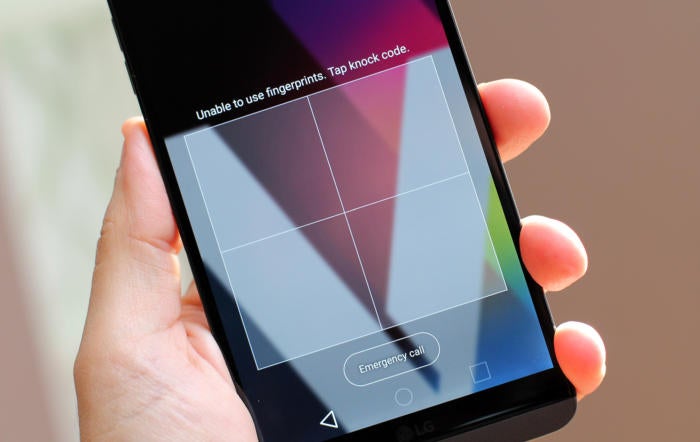
Like many previous phones, the V20 has an SD card slot behind a removable 3200 mAh battery. The battery-swapping scheme is better than the G5’s, which requires a violent snap to separate the battery from its chin. But it still presents challenges. In the new scheme, you press a button on the side of the phone. Then pry the aluminum back panel off the chassis. It’s difficult to tell when the two pieces disengage. I frequently pressed the button multiple times before the phone separated. On a positive note, the V20 assembled seam between the two body pieces is virtually invisible to the touch. For a phone with so many body panels of varying materials, the V20 is built to very tight tolerances.
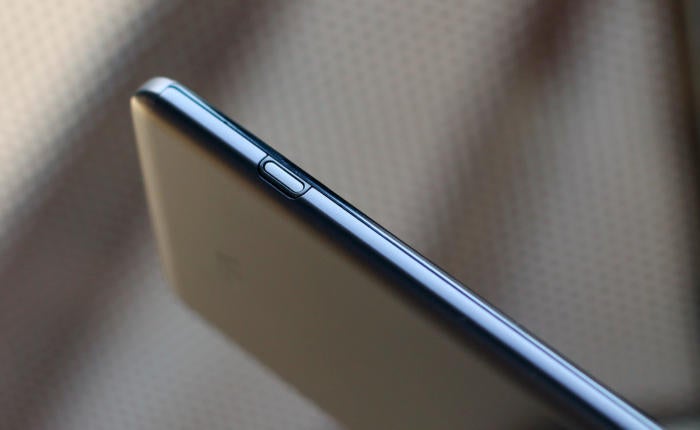
An Interesting Take on Dual Displays
With a 5.7-inch display. The V20 delivers the most significant screen size among contending flagship phones now that the Note7 is dead. Pixel density is a whopping 513 pixels per inch, with a 2560×1440 resolution. The display is bright with a white balance that errs on the cool side.
The phone runs Android 7.0, so it doesn’t yet have the Night Mode feature built into Android 7.1. Nonetheless, provides a Comfort View feature that warms up the display’s color temperature at the push of a button. Comfort View has three intensity settings, so you can customize the look for eye-soothing reading before bed.
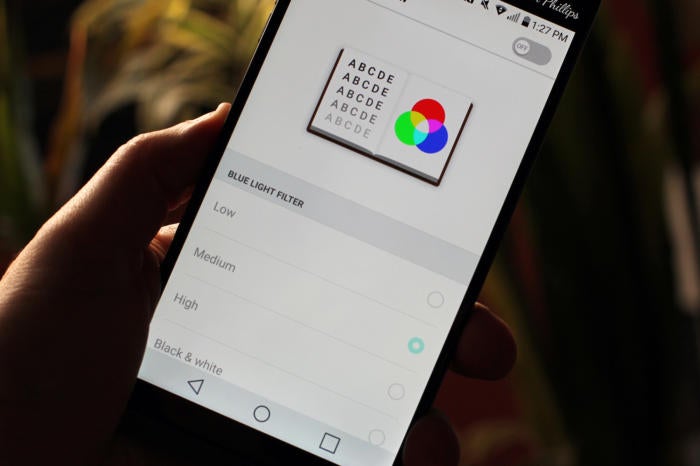 Comfort Mode replicates the Night Light feature built into Android 7.1, even adds three steps of blue light filtering.
Comfort Mode replicates the Night Light feature built into Android 7.1, even adds three steps of blue light filtering.
All in all, the display is excellent, if unremarkable. This is 2016, and all flagship phone displays are fantastic. Some phones, like the V20 and iPhone, use LCD Display technology. While others, like the Pixel, and all of Samsung’s phones, use AMOLED. The user-experience differences between the two technologies are negligible for most people. Which may explain why distinguished the V20 with a 1040×160, always-on Second Screen right above the main display.
Think of the Second Screen as a helpful little control panel that stays active and actionable. Whether your primary display is on or off. For example, when the phone is dark-locked. You can still swipe around the 2.1-inch strip to see icons of your most recent notifications. Like the date and time, and controls for the music player if you’re currently listening to a song. I think the Second Screen’s quick-launch buttons for the flashlight and camera may be handy for some. As these features can sometimes take too long to access from a locked screen.
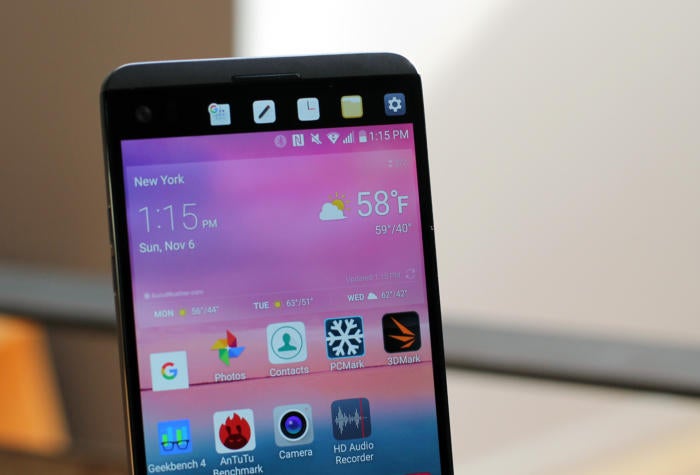
The Second Screen adds more functionality when the main display is on. You can set the display to show the content of recent notifications. Details of upcoming calendar events, shortcuts to recent apps. And even shortcuts to call or text up to five different contacts. The text icons are small, though more prominent than in LG’s V10 model. But the Second Screen is still a valid and valuable add-on. It’s not a reason to buy the phone. But if you remember to use the Second Screen, it comes in handy.
Creation: Features Galore
Creation, aah, where to begin? The V20 is packed with so many damn cameras, microphones, and fancy-sounding multimedia algorithms. I could spend 5,000 words just describing it all. But you don’t want that, I don’t want that, so here are the top-line details.

On the back of the phone, you’ll find two cameras. A 16-megapixel standard-angle lens has a 75-degree field-of-view f/1.8 aperture. There’s also an 8-megapixel, f/2.4 wide-angle aperture lens that increases field-of-view to 135 degrees. A 5-megapixel, f/1.9 selfie camera round out the camera offerings.
Unlike Samsung or Apple, which provides a full suite of DSLR-style manual controls for still images. Although for comparative testing purposes, we shot all photos in LG’s auto mode. On the video side, the V20 taps into Steady Record 2.0. An electronic image stabilization technology that enlists the phone’s gyroscope to smooth out videos taken with a shaky hand.
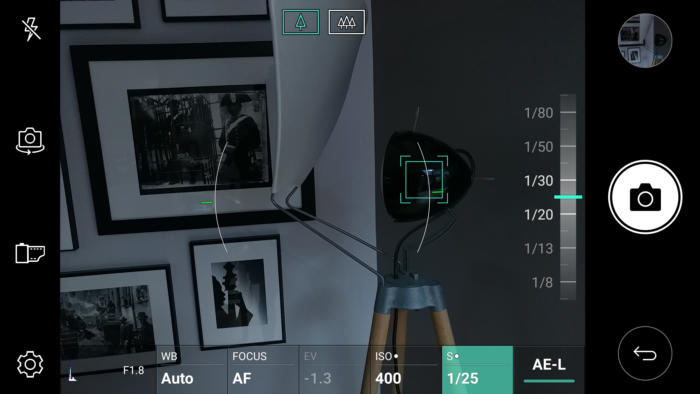
LG also put a lot of thought into the V20’s sound-recording capabilities. The phone boasts three high-quality microphones for high-fidelity audio pick-up. The video and camera interface has an HD Recorder App with deep controls to fine-tune audio capture. In the video camera alone, you can adjust the directivity of the microphones fore and aft. Toggle on a Noise Filter; move sliders for Gain. A Cut Filter to reduce background noise, and a Tweeter filter that determines the loudest volumes the microphone will record.
Still Image Performance
It sounds terrific, but real-world testing doesn’t fulfill all LG’s content-creation promises. Putting the V20 against the Pixel XL, iPhone 7 Plus, Samsung Galaxy 7. We found that LG’s phone offers the best sound recording. But falls short of the Pixel XL in still image capture, which falls down in video image stabilization. Check the video below for the complete test results, or keep reading for more detail.
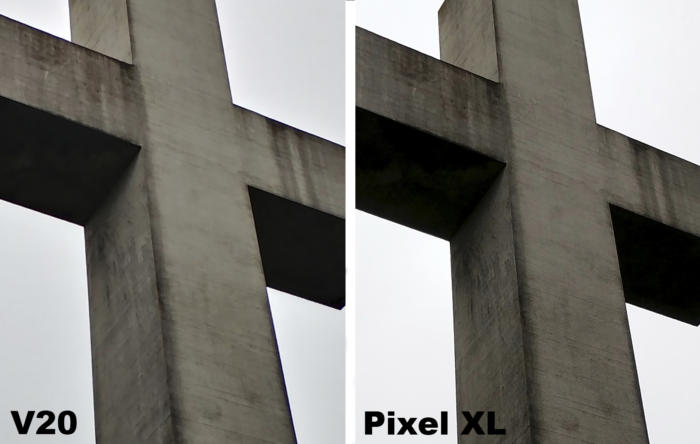
The following shots of succulents really drive home how much clarity the V20 gives up to the Pixel XL. When shooting under the brighter morning sunlight. We’re getting sharper detail and more vivid colors from Googles’s camera.
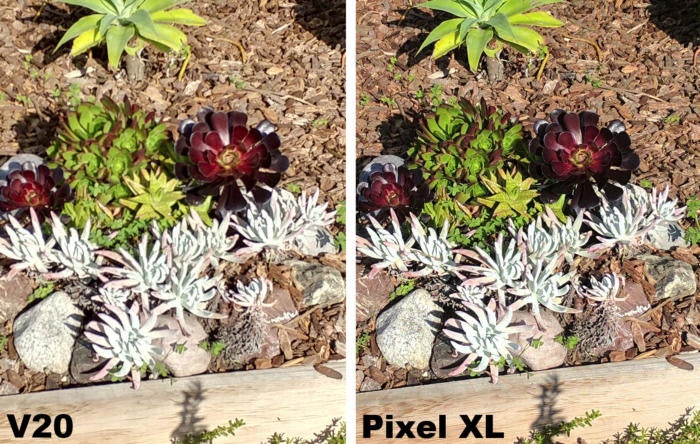
I was happy with how the V20 captured sunbeams peeking through the fog on the top of Mount Davidson. And was focusing both cameras on the sunbeams, not the trees in the foreground. The Pixel created a more atmospheric shot, but the V20 retained more dynamic range across the entire scene.
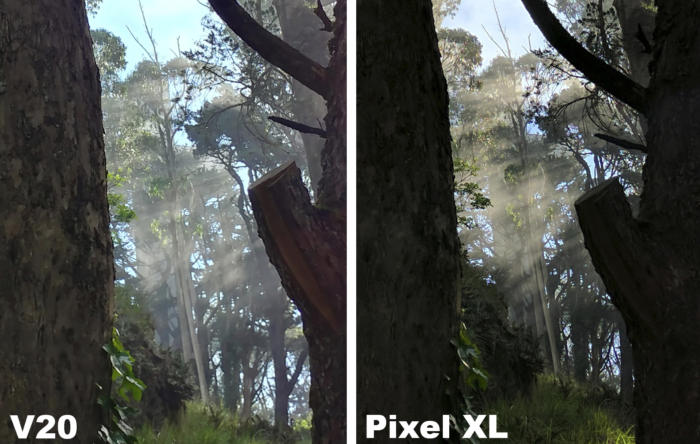
Finally, I shot an abstract painting under low light conditions in my living room. Both phones were locked down on a tripod to eliminate variables under challenging circumstances. By large, the V20 delivered a muscular clarity definition. And retained more information in the darkest areas of the image but was off on color accuracy. For example, the blues in the Pixel XL photo are much more true to life.
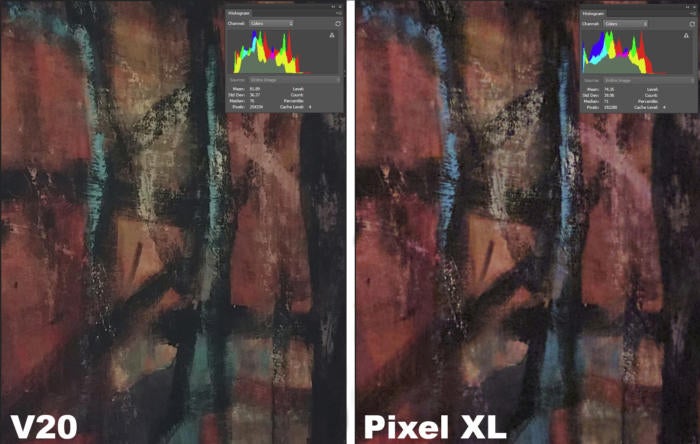
If we look at all my photos and add in the tests conducted by our video team. We find that the V20’s camera isn’t bad. It’s just that the Pixel XL images are better. And that’s relevant because LG has positioned the V20 as the go-to phone for content creators.
All that said, the V20 does have a second wide-angle lens, which none of the other manufacturers offer. It’s arguably helpful in taking sweeping environmental panorama shots, but images will suffer barrel distortion on the edges. You’ll find a disturbing lack of clarity when you zoom into fine detail. That edge distortion looks particularly bad when shooting group photos up close. I’d ask people to squeeze in tightly instead of using this lower-specd, 8-megapixel sensor.

On the plus side, it still includes a full suite of DSLR-style manual controls for its rear-facing cameras. They help cement the V20 as the perfect phone for tinkerers who want to explore their tech toys. I love the ability to manually control the focal length. And set a 30-second shutter speed for night-time shots on a tripod.
Video Audio Recording
During my hands-on with the V20, I talked up Steady Record 2.0, an electronic image stabilization technology that uses the phone’s gyro sensor to make shaky videos appear smooth and fluid. Steady Record 2.0 also uses digital image stream analysis. Objects are adjusted to appear in the same position between frames by analyzing 15-20 structures. LG made an impressive presentation. But multiple weeks of testing showed me that LG’s video image stabilization can’t touch Google’s or Apple’s.
Check out the video embedded at the top of the previous section. Our video stabilization testing begins at the 11:40 mark. The V20 demonstrated some of the worst camera shakes of all four cameras tested, debunking LG’s claims. What’s more, I found the same poor performance during my own anecdotal testing. The V20’s video was prone to a fair amount of stutter jelly effects.
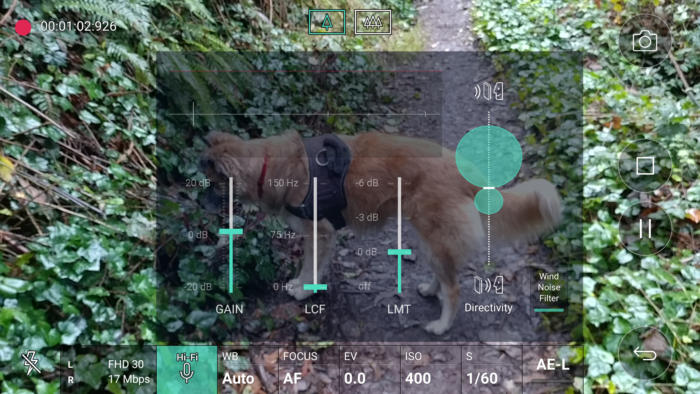
On the other hand, LG’s claims of superior audio recording are entirely legit. Videos shot with the V20 sounded markedly louder. More decadent altogether better than the content shot with all the other phones we tested. And with the V20’s extensive audio recording controls are available for video recording in the camera’s manual video mode. You can drill down and fine-tune your recordings, assuming you know what you’re doing. Check out our audio recording results in the video below.
HD Audio
The irony, of course, is that if you’re really serious about content creation. You’ll be using discrete microphones, not relying on the microphones on a smartphone. Still, it’s nice that LG adds these recording controls to the V20’s extensive toolkit.
The phone also comes with an HD Audio Recorder app that records in stereo, just like the camera app. There is audio profile presets for normal or concert modes. Or you can opt to adjust the Gain, F T sliders. The bottom line is there’s not a better phone for capturing bootleg concert recordings. Not that you’d ever do that.
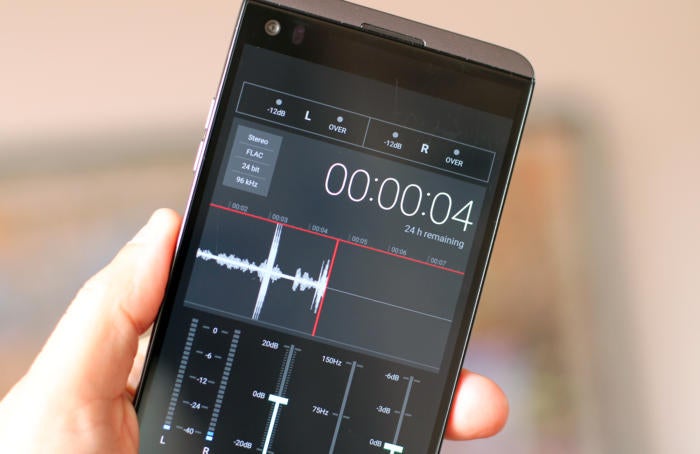
Rounding out the audio story is Hi-Fi Quad DAC. The DAC, a digital-to-analog converter, obviously won’t work with Bluetooth earbuds. However, if you still have wired earphones, you can toggle them on for potentially better sound. I only tested the feature with Spotify and Play Music playback and couldn’t hear much improvement in audio quality. Nonetheless, I love the DAC’s volume controller, which lets you fine-tune 75 steps of loudness.
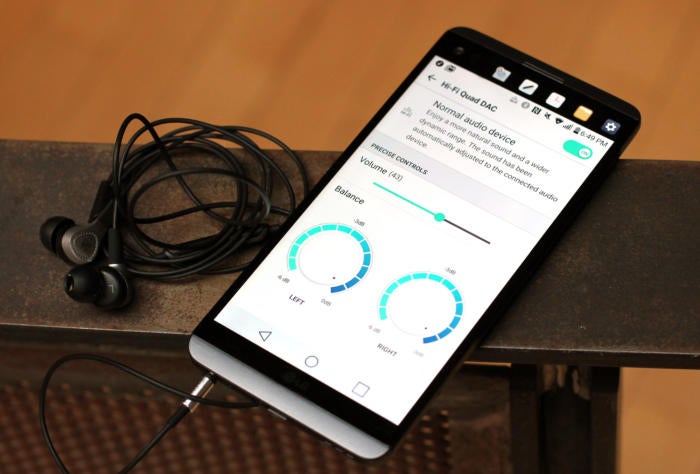
OS Experience, Performance, the Bottom Line
Unfortunately, the V20 failed to run our standard battery benchmark. I gave up after three attempts, so I don’t have a specific battery score to share with you. I can tell you, however, that the phone’s battery lasted relatively long, even during extended video recording tests. So, anecdotally, I was pretty happy with battery life.
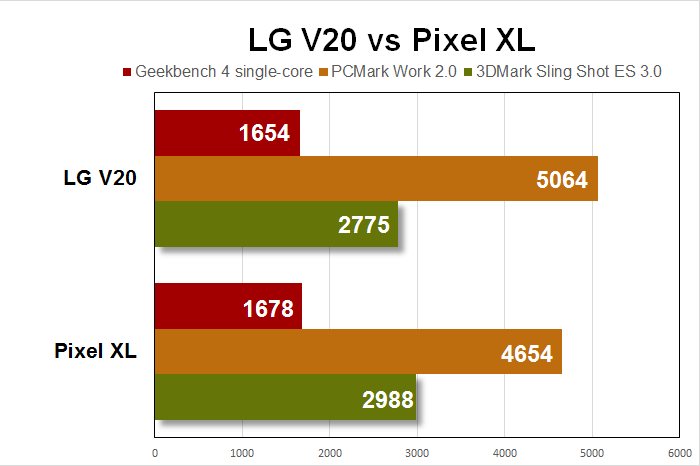
The V20 runs a skinned version of Android 7.0. Making it the only phone other than the two Pixels to run a version of Nougat, Android’s latest operating system. In core silicon, the V20 includes Qualcomm’s Snapdragon 820 processor, 4GB of RAM, and either 32GB or 64GB of storage. All of this would be state-of-the-art for Android phones. If not for the fact that the Pixels run a slightly more advanced Snapdragon 821 chip and Android 7.1.
The Pixel XL feels palpably zippier than the V20. This is why I prefer Google’s phone in a two-way battle. The Pixel’s OS app behaviors think quicker and more fluid than the V20’s. Perhaps due to system tuning on Google’s part. Our benchmarks didn’t expose dramatic performance deltas between the two phones. Still, everything about the Pixel XL feels faster, cleaner, and more modern, including the vibe of the system software.
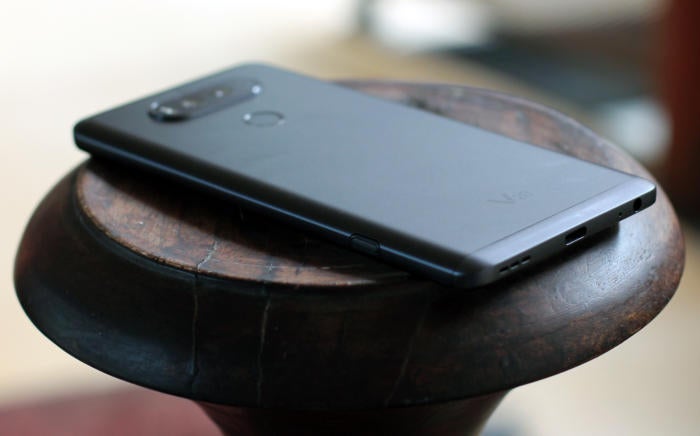
Final Thoughts
LG deserves kudos for not junking up its UX 5.0 skin with unnecessary apps and annoying interface decisions. Nonetheless, the V20’s system experience is simultaneously busy and clinical relative to the Pixel. Where it has made strides toward simplicity and whimsy. From its app icons to its wallpapers to its weather widget, the V20 experience feels older. Which matters when using your phone multiple times an hour daily.
The V20 also lacks an Assistant. So while it’s an excellent Android phone, it’s not the most advanced expression of an Android phone. All its sundry content-creation tools and extra little doodads can’t push past the Pixel on that score.
